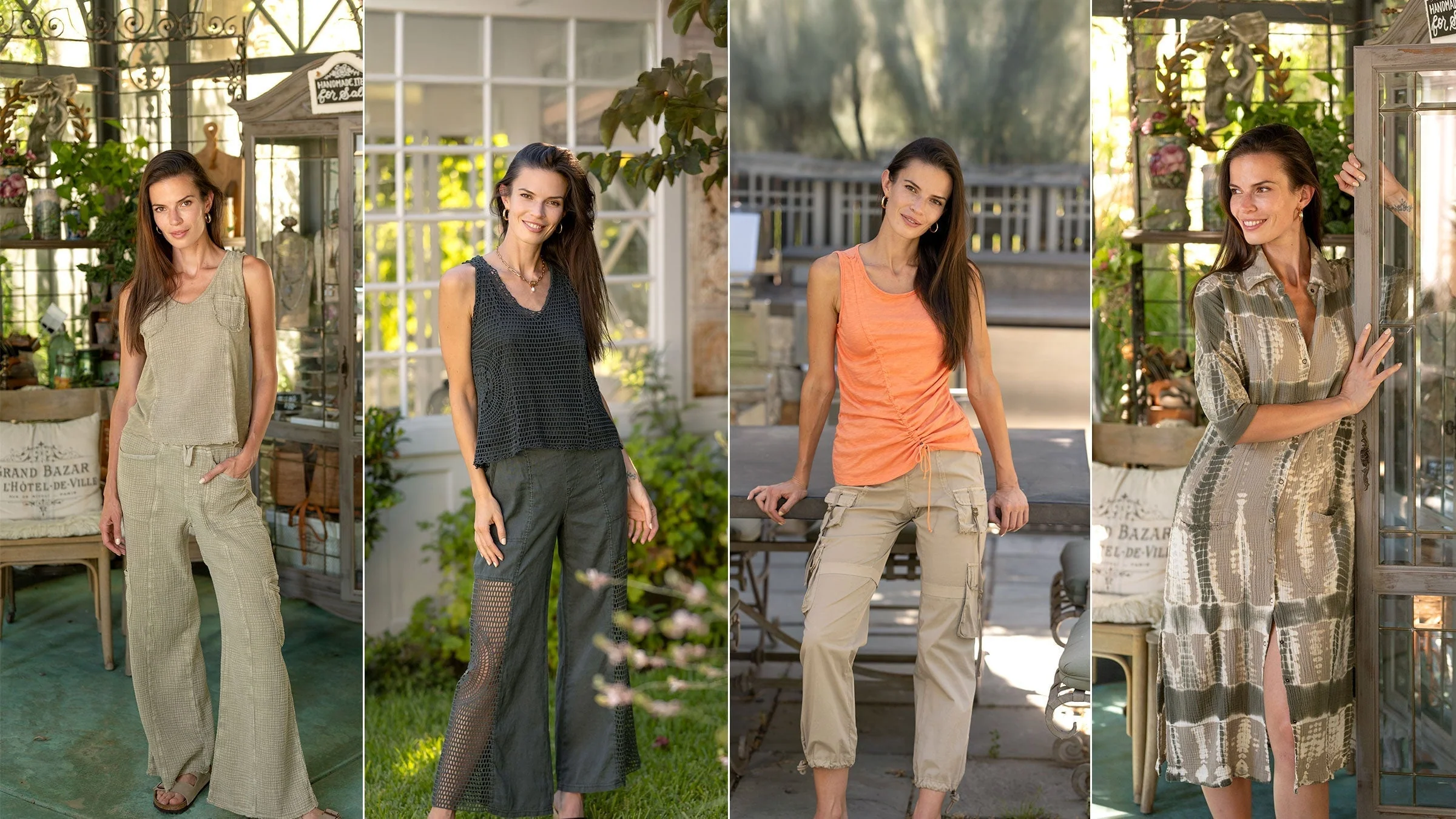
Psychology of Dressing: How What You Wear Affects Mood + Confidence
Among the many ways we start our mornings, getting dressed and our clothing choices can heavily impact mood and confidence on a daily basis. Color, fit, and fabric can all play a role in how we feel about ourselves. It's important to honor our individuality and dress in a way that positively impacts our sense of identity and well-being and allows for a confident, excited approach to day-to-day life.
1. Powering up with color:
Color is one of our most powerful tools for communication. From marketing to
painting to event-planning to organizing the pantry, color stories and schemes serve as a means of connection. In and of itself, the power of color is enormous and influential.
Many studies have examined the impact of color in different settings, learning, for example, how blue is calming in a classroom or red ink on assignments makes students anxious. The colors we choose to wear can reveal who or how we are, often signifying a state of mind or a specific trait. Clothing is a particularly interesting phenomenon because beyond their colors, the items we wear on our bodies inevitably become a piece of who we are and the stories we have to tell. Clothing influences our mood by changing how we feel about ourselves. Wearing bright colors like orange or electric blue can energize and
make us feel more positive, while sporting dark colors like black or gray can enhance somber or reserved feelings.
2. Dressing for dopamine:
The phrase “dopamine dressing” refers to the concept of wearing bright, “happy”
colors or prints and hues you’re attracted to enhance your life, uplift your mood, and even better your performance in day-to-day tasks. Studies show exciting colors and patterns trigger a dopamine response, e.g. the happy chemical. Happier clothing, happier days.
Personally, my life changed for the better when I stopped wearing only black just because it was “flattering” or made me appear slimmer. There was so much joy to be found in walking into a store and just pulling out whatever my eyes gravitated towards. Dressing in color suddenly opened up a whole new world. I was excited about my outfits and so were other people. Inspiration is invaluable and so exciting to share with others. Experiment with new hues by going for what you're instinctively drawn to—and don’t be afraid to power-clash!
3. Flattering your fit:
Beyond the rainbow, factors like fit and fabric come into play. Physical discomfort caused by tight or restrictive clothing can lead to feelings of irritability and distraction, which can negatively impact mood. On the other hand, comfortable clothing in soft, stretchy material allows us to move more freely and reduces physical discomfort, making us feel more at ease and relaxed. When we feel physically comfortable in our clothing, we are less likely to be self-conscious or worried about our appearance, which can also contribute to a more positive mood. Wearing well-tailored clothes in proper sizing can also help.
Knowing your measurements is one way to find well-fitting pieces. Additionally, knowing which materials feel best on your skin can lead to better shopping
choices. Working with a tailor can provide a range of benefits, including customization, alterations, quality, style, and convenience. Tailoring can enhance your wardrobe, ensuring that your clothing fits properly and looks great. Well-fitting clothing is important for function and confidence, and having a wardrobe full of pieces that look great no matter what feels incredible.
4. Curating quality:
Intentionally selecting well-made, carefully-sourced items can also grant a higher sense of self-worth. Respecting our clothing and wanting to take good care of our purchases instills confidence and self-respect, and choosing high-quality items as a conscious consumer leads to a more entrusted sense of responsibility in oneself.
Studies show that wearing higher-quality, coordinated undergarments and socks can enhance feelings of self-worth. I mean, how great does wearing a matching bra and underwear set feel? Sure, you’re the only one who knows, but the extra effort brings more self-assurance and in turn, a feeling of power, which helps us conquer our days with even more strength.
5. Enclothed in success:
Researchers at the University of Hertfordshire suggest that people tend to dress
according to how they’re feeling. You’re likelier to sport “unflattering” or shabbier
clothing when unmotivated or hurting. The tipping point lies in our ability to change our mood just by changing our clothes. Even on days when you’re feeling low, clothes can uplift and shift your internal dynamic. The term “dress for success” comes to mind.
Indeed, wearing your best colors and tailoring can also bring success in professional settings. The Scientific American cites a study showing that in the business world, a profitable deal is even likelier if one appears polished and put-together. A theory entitled “enclothed cognition” says that we often embody the traits of the clothes we wear—e.g., a doctor performing more seriously when wearing a white coat. Many offices require business-casual and some degree of formality in an effort to maintain professionalism and a high work ethic. Of course, sometimes dressing up can be a drag when we just want to stay in pajamas, but putting in the extra effort makes it easier to take on the day. After all, the term “power suit” is popular for a reason!
6. Suited up and styling:
Your power outfit definitely doesn’t need to be a suit though. First, you’ll want to
figure out what your most flattering lines and colors are. While most of us may already know what looks good, it’s helpful to revisit style options if you’re looking for some inspiration.
What colors make you come alive? What silhouettes make you want to
dance?
A huge portion of dressing for yourself is thinking about what you’re really
drawn to. What textures and patterns stick out to you immediately? What attracts you when you first walk into a store? Instinctual answers will ultimately guide you.
Proportioned outfits like a longline blazer and jacket with a pencil skirt and some
heels are often universally flattering as well. Timeless pieces like a leather or denim jacket, a white button-down, or tailored trousers can serve as a foundation to build a more exciting outfit or wardrobe upon. If you’re skeptical about wearing, say, hot pink, try incorporating it into an outfit you already love, like with your favorite jeans and a trusted cardigan. Incorporating new color, style, and texture takes practice but can ultimately bring so much joy and new experience even in how we engage with others and take up space in the world.
Getting dressed can be as drab as it is exciting, but setting your intentions on how you’d like to feel and what you’d like to embody can make the process easier and even quite fun.
What new pieces can you incorporate with your tried-and-true staples? Whose style can you emulate in small ways to bring some refreshing inspiration to your look? How can you have better moods and higher confidence just by changing up the way you dress?
It’s all about honoring your joy and understanding of your inner self. If you know blue makes you happy, wear more blue. If a blazer makes you feel powerful, wear her often and wear her well. Honing in on your individualities and what you love will help guide you in dressing to positively impact your mood, confidence, and sense of identity in a way that supports long-term growth, well-being, and overall happiness.










